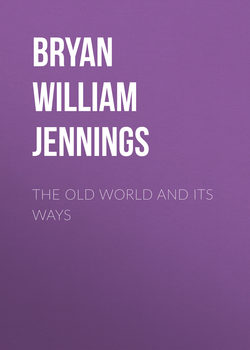Читать книгу The Old World and Its Ways - Bryan William Jennings - Страница 14
CHAPTER XIV.
THE PHILIPPINES – NORTHERN ISLANDS AND THEIR PEOPLE
ОглавлениеWhile a deep interest in the political problems tempts me to deal at once with the policy to be pursued by our government with respect to the Filipinos, I am constrained to proceed logically and discuss first the islands and their people. And in speaking of the Filipinos, a distinction should be made between those who inhabit the northern islands and are members of one branch of the Christian Church and those who inhabit the island of Mindanao and the Sulu Archipelago – people who are followers of Mohammed. While a considerable number of Christian Filipinos are to be found in Mindanao and some in Sulu, the Sultans and Datus have dominated the country. Even Spanish authority never extended over the southern islands and the garrisons maintained at the seaports were constantly in fear of massacre.
Leaving the southern islands for the next article, I shall confine myself at present to Luzon, Panay, Negros, Cebu, Samar and the smaller islands which make up the Visayan group. These islands contain the bulk of the territory, a large majority of the people, most of the material wealth and practically all of the civilization of the Philippines. Luzon, the largest of the entire group, reaches north almost to the nineteenth parallel and is about six degrees long. Like the islands of Japan, it is mountainous and well watered. The other islands of the group are considerably smaller and extend as far south as the ninth parallel. They, too, are mountainous, but the valleys are fertile and support a large population. The principal industry is agriculture, and the soil produces a variety of cereals, fruits and vegetables. Rice, as in other oriental countries, is the chief article of food, though hemp is by far the largest export. The hemp plant looks so much like the banana that the traveler can scarcely distinguish between them. Sugar cane is also grown in many parts of the islands and would be cultivated still more largely but for the low price of raw sugar. Sugar, however, cannot be raised here with the same profit that it can in Hawaii and Cuba, owing to the fact that it must be replanted more frequently. Tobacco of an excellent quality is produced on several of the islands and in sufficient quantities to supply the home demand (and nearly all Filipinos use tobacco) and leave a surplus for export.
